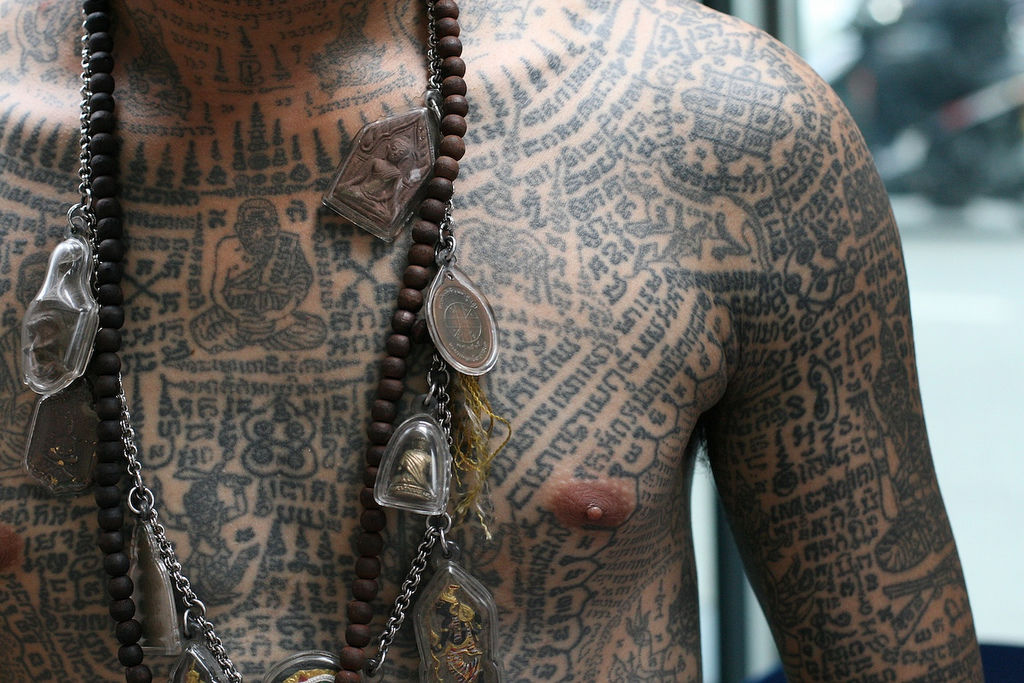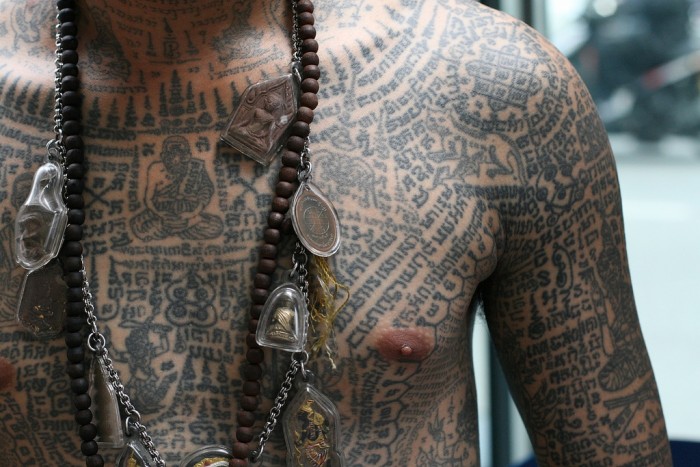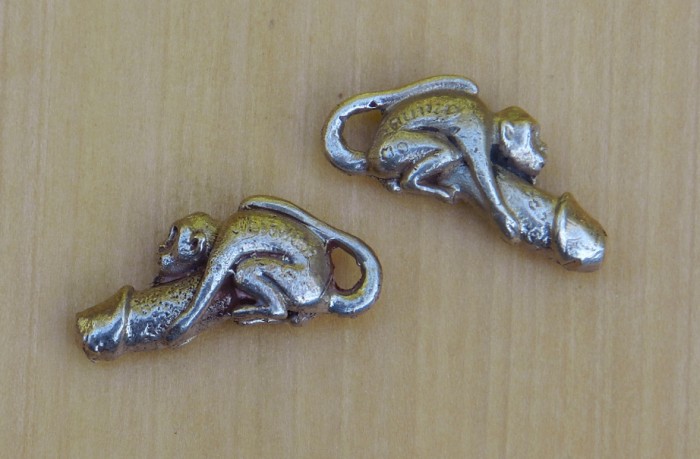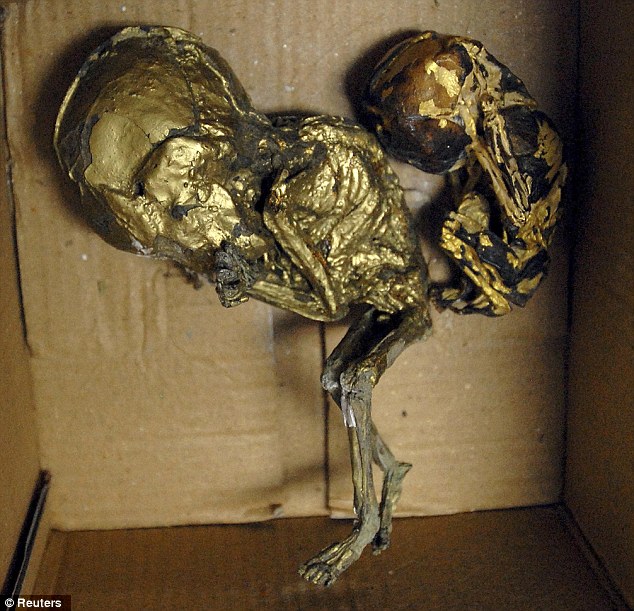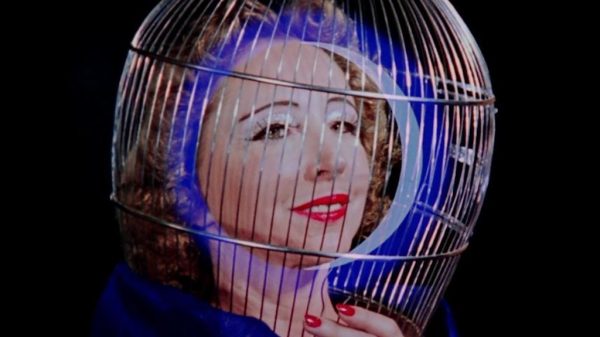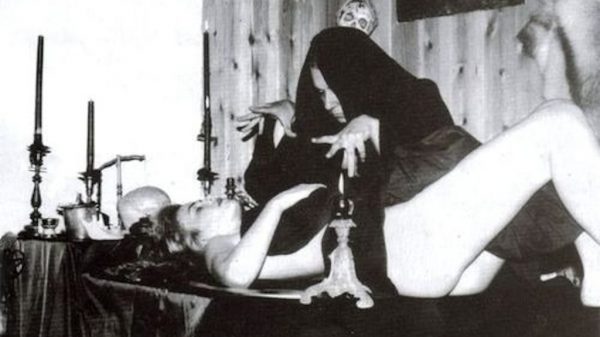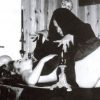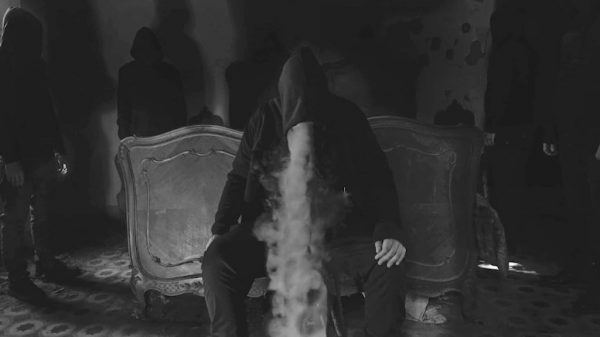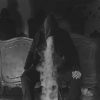‘It seems to me that the barrier between the immediate everyday reality and the world of ghosts, spirits, and visions—a parallel reality that people in the West usually only glimpse using psychedelics—is much thinner there. You frequently pass between one and the other without realizing. I don’t know whether this is due to the latitude, lassitude, spicy food, oriental lay lines or something else. I have no real idea, I just know that if you wander with an open mind, and receptive senses, you are regularly confronted by sights or visions as surreal, evocative, and gorgeous as any MDMA or DMT experience, without the need to take any drugs at all.’
Such was the late Peter ‘Sleazy’ Christopherson’s opinion of Thailand. Pioneering graphic designer in the Hipgnosis firm, founding member of Throbbing Gristle, Psychic TV and Coil, and director of more TV commercials and music videos that have shaped your view of reality than you can think of, Christopherson wrapped up a thirty-plus year career of threading the fine line between reality, art and the otherworldly by relocating to Thailand, where he would pass in 2010, only a few months after the above statement. It’s only fitting that a person so finely tuned to different planes of reality would end up in a country with such a rich and – despite the modern world inching over it day by day – vibrant magical life. Indeed, there’s more to Thailand than trashy tourist retreats and ladyboy stories. Like most of Southeast Asia, it has a rich and established spiritual worldview that has only recently come into contact with the modern world and has thus managed to thrive while Western spirituality has consistently degraded.
While Theravada Buddhism is statistically the most predominant belief system (supported by approximately 90% of the population), pre-Buddhist beliefs in magic and animism have prevailed, and eventually become intertwined with Theravada practices, with magic, and particularly black magic, being an everyday part of Thai life. For many people in very different walks of life, ghosts are considered a very real phenomenon; protective Sak Yant tattoos, which are applied in the midst of a carefully structured magical ritual, are commonplace; and the practice of casting spells has been officially outlawed. Black magic, ghosts, spells and curses are regularly referenced in popular culture. The Mau Pii, local shamen, are important and highly respected – if not straight up feared – figures in the community. It’s not uncommon, particularly in rural areas, to consider the blessing by the Mau Pii of a new home, business, or vehicle a necessity of utmost importance.
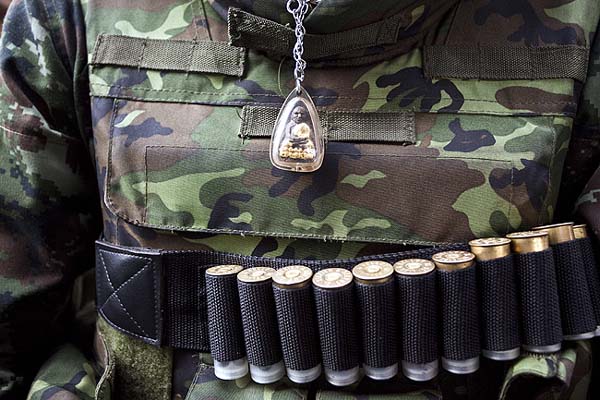
Amulets are a key component of Thai magical reality. Palad Khiks, also known as Thai penis amulets, are the most well known in America and Europe, mainly due to the novelty factor. Imported from India by way of Cambodia, and originally a representation of the god Shiva, Palad khiks are phallic amulets inscribed with spells, which serve to protect from harm, increase virility, boost business, etc… and take a number of forms and sizes, ranging from keychain-sized animal and humanoid figurines with disproportionately large penises to replicas of male organs which can be several feet in length. As odd and perhaps offensive as they may seem to foreigners, they are extremely popular and commonplace in Thai society, where their sale and manufacture is an important source of income for the buddhist monks who manufacture them. An amazing example of the importance of magic in Thai society and its reliance on amulets is the fact that army authorities officially distribute protective amulets to the troops in the long-standing border conflict with Cambodia.
And then there is the Kuman Thong. Kuman Thong (‘golden boy’) are extremely powerful amulets, said to protect and bring luck to the owner, provided said owner takes care of it properly, which involves presenting it with frequent offerings in the form of sweets, cigarettes, etc… The amulet represents a smiling chubby infant, encapsulated in a small container along with different oils and powders or, on occasion, blood and other bodily fluids. The legend behind it, however, is a grim one. Taken from XVIIIth century epic poem ‘Khun Chang Khun Phaen’ (one of the most important and well known works of Thai literature), it narrates how Kung Phaen, a warrior well versed in the occult, removed his stillborn son’s fetus from his wife, roasted it, consecrated it in a ritual carried out at a cemetery, and covered it in gold leaf and lacquer, in order to use it as an extremely powerful amulet. While this is pure literature, and despite it being illegal, the fact that merely three years ago a British citizen was arrested in Bangkok in possession of six roasted and lacquered fetuses provides evidence that the practice is still very much alive.
Thailand may be overrun with western tourists and the culture they drag in with them, but it has retained its connection to the spirit world that the west has forgotten and rejected. As Christopherson noted, what is seen as drug-fueled hallucination and superstition in western countries is accepted as a traditional part of life in Thailand. There is no doubt that the west is closed off to many of life’s mysteries, and maybe the Thai are better able to part the veils between the multiple universes.

